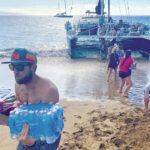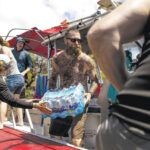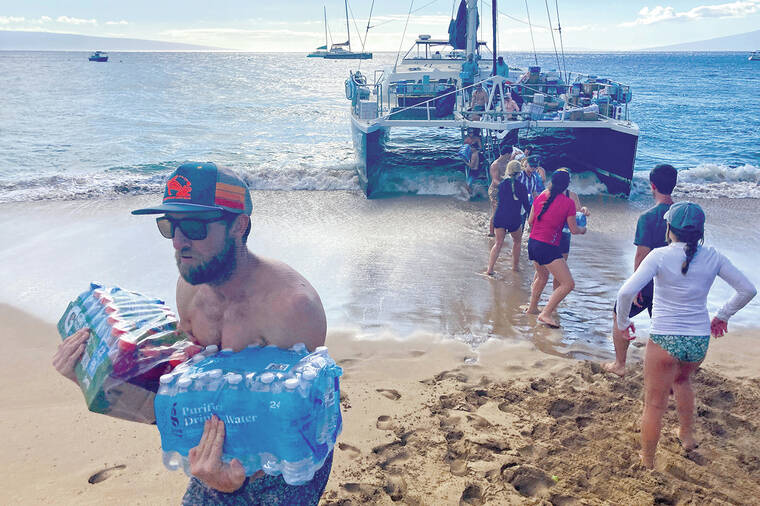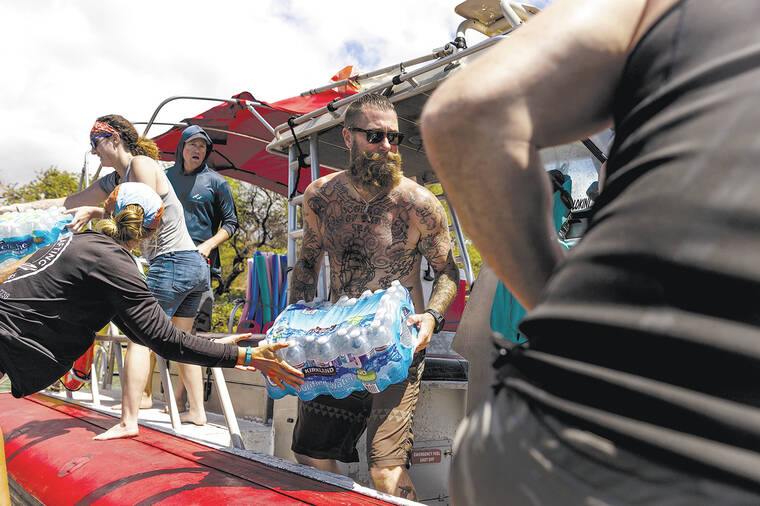Maui water is unsafe even with filters, one of the lessons learned from fires in California


The language is stark: People in torched areas of Maui should not try to filter their own drinking water because there is no “way to make it safe,” Maui County posted on its Instagram account this week.
The message reached Anne Rillero and her husband Arnie in Kula, who were eating yet another meal of frozen pizza. The couple feels incredibly lucky they and their home survived the fires that raced across Maui in recent days, wiping most of Lahaina off the map. The number of confirmed fatalities was raised on Friday to 114 people.
When a neighborhood organization alerted them not to drink their water and to air out the house even if they run the tap, the couple decided to eat off paper plates to avoid exposure. No washing dishes.
“It’s alarming that it may be in the water system for awhile,” said Rillero, a retired conservation communication specialist who has lived on the island for 22 years.
Brita filters, devices connected to refrigerators or sinks and even robust, whole-home systems are unlikely to address the “extreme contamination” that can happen after a fire.
“They will remove some of it, but levels that will be acutely and immediately toxic will get through,” said Andrew Whelton, a Purdue University researcher and expert in water contamination after wildfires in urban areas.
The Maui fires damaged hundreds of drinking water pipes, resulting in a loss of pressure that can allow toxic chemicals along with metals and bacteria into water lines.
“You can pull in contaminated or dirty water from the outside, even when those lines are underground,” said David Cwiertny, a civil and environmental engineering professor at the University of Iowa.
Hundreds of families could be in the same situation as the Rilleros in the Lahaina and Upper Kula areas, where people have been told to minimize any contact with county water including showers. In Lahaina alone, aerial imagery and damage assessment data generated by Vexcel Data show 460 buildings apparently undamaged by the fires. These are places where people are returning.
For now, the county has told people to use bottled water for all their needs or to fill jugs at tankers called water buffalos, which have been brought in near the burns.
The state health department’s environmental health division told Maui County, which operates water delivery systems for most residents, to test for 23 chemicals. Those are just the ones for which the federal government has set limits for drinking water.
These warnings reflect new science and are intended to avoid the whiplash of conflicting information received by people impacted by the 2018 Camp Fire in California, who received messages from four different agencies.
Until a few years ago, wildfire was only known to contaminate drinking water at the source, such as when ash runs into a river or reservoir. California’s Tubbs Fire in 2017 and the Camp Fire “are the first known wildfires where widespread drinking water chemical contamination was discovered in the water distribution network,” according to a recent study published by several researchers including Whelton.
After the Camp Fire destroyed Paradise, California, officials didn’t initially understand that smoke and chemicals had leached into the water through broken and melted water pipes. So they did what was standard after other fires: they told people to boil water before use.
Concerned about benzene contamination, the Paradise Irrigation District water utility then changed the order and told people to avoid the water.
Four days later, the California State Water Resources Control Board announced people could drink it as long as it didn’t smell. Two and a half weeks later, that agency announced there was benzene in the water.
Two months after that, a third agency, a county health department, told the public the water was unsafe and not to attempt to treat it on their own.
“There were a lot of unknowns,” Rich said. “When the scientists came six months into the recovery, they really answered a lot of questions that we wish we would have had at the beginning.”
New contaminants also have been discovered recently. The chemicals that Hawaii’s state government told Maui County to test for are called volatile because they tend to become airborne, like gasoline that turns to vapor when it drips from the pump onto your car.
But Whelton’s new research on the Marshall Fire in Boulder County Colorado, shows a group of heavier compounds can contaminate damaged water lines as well, even when benzene and other better-known chemicals are not there.



